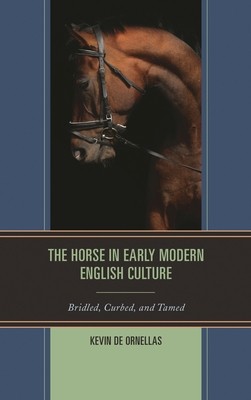
- We will send in 10–14 business days.
- Author: Kevin De Ornellas
- Publisher: Fairleigh Dickinson University Press
- ISBN-10: 1611476585
- ISBN-13: 9781611476583
- Format: 15.5 x 22.9 x 2.3 cm, kieti viršeliai
- Language: English
- SAVE -10% with code: EXTRA
Reviews
Description
Kevin De Ornellas argues that in Renaissance England the relationship between horse and rider works as an unambiguous symbol of domination by the strong over the weak. There was little sentimental concern for animal welfare, leading to the routine abuse of the material animal. This unproblematic, practical exploitation of the horse led to the currency of the horse/rider relationship as a trope or symbol of exploitation in the literature of the period. Engaging with fiction, plays, poems, and non-fictional prose works of late Tudor and early Stuart England, De Ornellas demonstrates that the horse--a bridled, unwilling slave--becomes a yardstick against which the oppression of England's poor, women, increasingly uninfluential clergyman, and deluded gamblers is measured. The status of the bitted, harnessed horse was a low one in early modern England--to be compared to such a beast is a demonstration of inferiority and subjugation. To think anything else is to be naïve about the realities of horse management in the period and is to be naïve about the realities of the exploitation of horses and other mammals in the present-day world.
EXTRA 10 % discount with code: EXTRA
The promotion ends in 22d.22:57:38
The discount code is valid when purchasing from 10 €. Discounts do not stack.
- Author: Kevin De Ornellas
- Publisher: Fairleigh Dickinson University Press
- ISBN-10: 1611476585
- ISBN-13: 9781611476583
- Format: 15.5 x 22.9 x 2.3 cm, kieti viršeliai
- Language: English English
Kevin De Ornellas argues that in Renaissance England the relationship between horse and rider works as an unambiguous symbol of domination by the strong over the weak. There was little sentimental concern for animal welfare, leading to the routine abuse of the material animal. This unproblematic, practical exploitation of the horse led to the currency of the horse/rider relationship as a trope or symbol of exploitation in the literature of the period. Engaging with fiction, plays, poems, and non-fictional prose works of late Tudor and early Stuart England, De Ornellas demonstrates that the horse--a bridled, unwilling slave--becomes a yardstick against which the oppression of England's poor, women, increasingly uninfluential clergyman, and deluded gamblers is measured. The status of the bitted, harnessed horse was a low one in early modern England--to be compared to such a beast is a demonstration of inferiority and subjugation. To think anything else is to be naïve about the realities of horse management in the period and is to be naïve about the realities of the exploitation of horses and other mammals in the present-day world.


Reviews